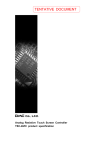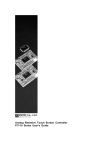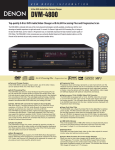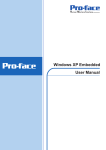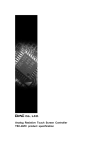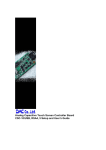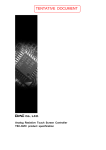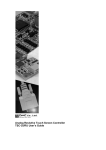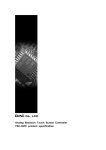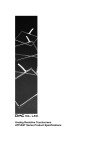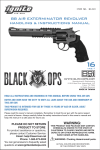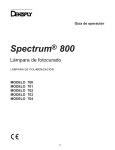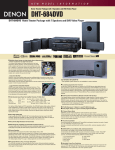Download Analog Resistive Touch Screen Controller TSC
Transcript
Analog Resistive Touch Screen Controller TSC-10/RSA Series User’s Guide TSC-10/RSA Series User’s Guide Table of Contents 1. Product Overview .................................................................................................................. 2 1-1. Products Applicable .......................................................................................................... 2 1-2. Product Names ................................................................................................................. 2 1-3. Overview ............................................................................................................................ 2 1-4. Peripheral Composition Overview.................................................................................... 3 2. Specifications ......................................................................................................................... 4 3. Connector................................................................................................................................ 5 3-1. Explanation of a connector terminal ............................................................................... 5 3-2. The mounted connector ................................................................................................... 5 4. Operation modes and functions......................................................................................... 6 4-1. Outline................................................................................................................................ 6 4-2. Initialization mode and idle mode ................................................................................... 8 4-3. Coordinate data mode.................................................................................................... 10 4-4. Calibration data setup mode ......................................................................................... 13 4-5. Calibration data read mode........................................................................................... 17 4-6. Calibration data mode .................................................................................................... 18 4-7. STOP mode .................................................................................................................... 21 4-8. Panel ID/mode information acquisition.......................................................................... 22 4-9. Mode list.......................................................................................................................... 23 4-10. Command list ................................................................................................................ 23 5. Changes & Improvements.................................................................................................. 24 5-1. Version History................................................................................................................ 24 6. Warranty ................................................................................................................................ 25 6-1. Warranty Period .............................................................................................................. 25 6-2. Warranty Target .............................................................................................................. 25 6-3. Warranty Exceptions....................................................................................................... 25 7. Precautions for Use ............................................................................................................ 26 7-1. General Handling ............................................................................................................ 26 7-2. Others .............................................................................................................................. 26 Dimensional Drawing 1 Rev.1.4 ©2004-2005 DMC Co., Ltd. TSC-10/RSA Series User’s Guide 1. Product Overview 1-1. Products Applicable This specification is applicable to TSC-10/RSA and TSC-10/RSA-E. 1-2. Product Names Product Name TSC-10/RSA TSC-10/RSA-E Description TSC-10/IC installed touch screen controller board. TSC-10/IC installed touch screen controller EEPROM. board with 1-3. Overview TSC-10/RSA and TSC-10/RSA-E are a touch screen controller board that performs an A/D conversion of an analog signal of a resistive touch screen, and transmits the coordinate data to the host in a 10-bit resolution serial correspondence at 9600bps. TSC-10/RSA and TSC-10/RSA-E can be used for various applications for its functions including the power saving mode, seven sampling speed settings (max. 150p/s *1), two external switch connections, and automatic calibration data loading with an external EEPROM. § TSC-10/RSA TSC-10/RSA dispenses a need to newly design the peripheral circuits, and can easily be used by connecting to the touch screen and the host. Using the driver software *2 enables the mouse emulation on various operation systems and dispenses the need to newly design the controller software. § TSC-10/RSA-E An EEPROM installed version of TSC-10/RSA. The calibration data can be stored in the EEPROM and automatically read after power-on. *1: 150 transmissions of coordinate data per second. *2: Please contact the local sales representatives for software availability. 2 Rev.1.4 ©2004-2005 DMC Co., Ltd. TSC-10/RSA Series User’s Guide 1-4. Peripheral Composition Overview A resistive touch screen is operated by resistance sensitive system between two layers such as film or glass. Two pieces of transparent materials with conductive coating are placed in the same direction as two electrodes face each other. The touch screen is activated when these transparent conductive layers are pressed to contact each other with a finger or a pen. The one of these conductive layers functions as an X-coordinates electric circuits and the other as a Y-coordinates circuits. To measure the X-coordinates TSC-10/RSA and TSC-10/RSA-E supplies voltage, Vcc to the one of X-coordinates electrodes with GND to the other. When the touch screen is pressed under this environment the voltage of the X-coordinates resistance is detected by the Y-coordinates electrode (A_in) at the input point (x1), where the X-Y coordinate resistance layers make contact. The detected voltage in supply side is higher than the GND side, which means ‘A_in’=Vcc at the point ‘E’ and ‘A_in’=0(*1) at the point ‘A’. TSC-10/RSA and TSC-10/RSA-E calculates coordinates data starting from A/D conversion of the ‘A_in’ voltage. The Y-coordinates is measured in the same way. By repeating this process alternately, coordinate value at the input point is determined. (*1) Excluding the loss in the controller circuits and touch screen. Actual detected voltage should be lower than ‘Vcc - GND’ because of loss happened in the circuitry. Vcc X-resistive-layer (reverse side) Touch xl X electrode (reverse side) Y-resistive-layer Y electrode A_in E D C B Vcc = 5.0V xl A_in Output Data A B C D E 0V 1.25V 2.5V 3.75V 5V 0000h (Min.) 00FFh 01FFh 02FFh 03FFh (Max.) A (TSC-10/RSA, TSC-10/RSA-E) Vcc xl X-resistive-layer (TSC-10/IC) A_in Y-resistive-layer E D C B (RS-232C) Touch (Touch Screen) To host A 3 Rev.1.4 ©2004-2005 DMC Co., Ltd. TSC-10/RSA Series User’s Guide 2. Specifications General Specifications Item Rating TSC-10/RSA TSC-10/RSA-E TSC-10/RSA Storing Temp. TSC-10/RSA-E TSC-10/RSA Supply Voltage TSC-10/RSA-E TSC-10/RSA Supply Current TSC-10/RSA-E Format Transfer Rate Correspondence Data Format Stop Bit Parity Frequency TSC-10/RSA Dimension TSC-10/RSA-E -20°C to +75°C (No dew condensation) -20°C to +85°C (No dew condensation) Operating Temp. Remarks DC 4.1V to 5.5V 15mA Asynchronous Serial 9600bps 8bit 1bit None 6MHz Vin=5.0V, At sampling Rate = 50p/s when touch screen is activated Fixed value 6MHz fixed 30 x 40 mm 8mm Max height of components (2mm) When EEPROM mounted. The backside of a board. Performance Specifications Description Coordinate Output Rate (point/sec) Rating (1) point mode (2) 30p/s (3) 50p/s (4) 80p/s (5) 100p/s Note Default: 50pps with DMC original driver software. (6) 130p/s (7) 150p/s Coordinate Resolution Linearity Error Input Response Time 10bit (1024 x 1024) The value will be lower in the active area of the touch screen ±3 LSB Maximum value at 50pps. 23ms When using the coordinate data mode 4 Rev.1.4 ©2004-2005 DMC Co., Ltd. TSC-10/RSA Series User’s Guide 3. Connector 3-1. Explanation of a connector terminal CN Terminal Name Function CN1 1 2 3 4 XL YU XR YD Touch Touch Touch Touch screen screen screen screen Input Input Input Input XL YU XR YD (Open (Open (Open (Open if if if if CN2 CN2 CN2 CN2 is is is is used) used) used) used) CN2 1 2 3 4 XL YU XR YD Touch Touch Touch Touch screen screen screen screen Input Input Input Input XL YU XR YD (Open (Open (Open (Open if if if if CN1 CN1 CN1 CN1 is is is is used) used) used) used) CN3 1 2 3 4 5 Dout Din GND Vin Vin RS-232C RS-232C RS-232C RS-232C RS-232C Data Output Data Input GND Power (Open if power is supplied from CN5) Power (Open if power is supplied from CN5) CN4 1 2 3 4 5 Dout Din GND Vin Vin RS-232C RS-232C RS-232C RS-232C RS-232C Data Output Data Input GND Power (Open if power is supplied from CN5) Power (Open if power is supplied from CN5) 1 Vin Power (+5V) (Open if power is supplied from CN3 or CN4) 2 GND GND (Open if power is supplied from CN3 or CN4) Either CN1 or CN2 is mounted. CN5 Either CN3 or CN4 is mounted. 3-2. The mounted connector CN P/N Manufacturer CN1 00-8370-049-000-800 KYOCERA ELCO CORPORATION CN3 S5B-PH-K-S J.S.T. Mfg Co., Ltd CN5 S2B-PH-K-S J.S.T. Mfg Co., Ltd 5 Rev.1.4 ©2004-2005 DMC Co., Ltd. TSC-10/RSA Series User’s Guide 4. Operation modes and functions 4-1. Outline TSC-10/IC enters the Initialization mode immediately after it is turned on or reset. In this mode, no setting is made and each mode shall be set. To transition to the available state, select the coordinate output rate and coordinate output mode and set the operation mode. § Initialization mode By either power supply ON or hardware reset/software reset, the internal initial setting is perfor med. In the serial scheme, communication with host is available. In USB scheme, device recogn ition process ends. In this mode, both serial and USB schemes receive a coordinate output rate command and transition to the idle mode. After hardware reset, it takes 500ms to transition to the initialization mode. In using the EEPROM, EEPROM data is read in this mode. § Idle mode TSC-10/IC enters this operation waiting mode after the coordinate output rate setting command is received. Transition to each mode takes place in this mode. § Coordinate data mode In this mode, analog data obtained from touch screen is output as coordinate data with 10 bit resolution without any calibration. This mode starts in the “idle mode“ by receiving the coordinate data send start command, and returns to “idle mode” again after receiving the coordinate data send end command. By receiving reset command, it transitions to the ”initialization mode“. This mode is used when host driver implements the calibration function, and also when necessary data is obtained in the calibration data setup mode. § Calibration data setup mode In this mode, calibration data used in “calibration data mode“ is set. Transition to this mode takes place when the setup mode start command is received in the idle mode. Select an appropriate calibration point among: - X=2, Y=2 (four point calibration) - X=3, Y=3 (nine point calibration) and - X=2, Y=2 (four point calibration) plus one center position (five point calibration) When this mode ends, calibration data is entered to EEPROM. § Calibration data read mode In this mode, setup data is read out from EEPROM if in using EEPROM, data set in the ”calibration data setup mode“ is stored to EEPROM. It is used if setting data is to be confirmed. Transition to this mode takes place and calibration data is output to the host if in the idle mode, calibration data read command is received. § Calibration data mode In this mode, individual difference and loss in the touch screen are corrected and coordinate value output is performed. Using calibration data set in the ”calibration data setup mode“, touch screen input point and indicator’s cursor display position can be matched. In using this mode, the host driver needs no calibration function. Using “calibration data setup mode“ setting value to set the coordinate data maximum value, maximum value can be limited to 10bits or less. This mode starts when in the idle mode, any ”calibration data send start command“ is received, and returns to the idle mode when receiving the calibration data send end command. When receiving the reset command, this mode transitions to the initialization mode. 6 Rev.1.4 ©2004-2005 DMC Co., Ltd. TSC-10/RSA Series User’s Guide § STOP mode This mode is enabled only in the serial communication. This mode starts when in the idle mode, STOP mode start command is received. This mode stops ceramic vibrator’s vibration and enters the power saving mode where the operation stops. By hardware reset, this mode transitions to the initialization mode. By receiving [00h] (null command) from host, the power saving mode ends and transitions to the idle mode. § Power-save mode This mode is only enabled in the serial communication. If in the coordinate data mode transitioned from [01h] or the calibration data mode transitioned from [0Ah], there are no inputs on the touch screen for 20 samplings, the ceramic vibrator stops its vibration and enters the power saving mode where no operations are taken. By inputting the touch screen or receiving a command from host, power saving mode is released and the transition to “coordinate data mode “ or ”calibration data mode“ takes place. 7 Rev.1.4 ©2004-2005 DMC Co., Ltd. TSC-10/RSA Series User’s Guide 4-2. Initialization mode and idle mode After the power up or hardware reset, internal initialization setting is performed (about 500ms) and the transition to the initialization mode occurs, where waiting for the communication with host. In this mode, if external EEPROM is used, EEPROM data is read. In the initialization mode, use the coordinate output rate setting command to set the interval for sending a coordinate. Where, touch screen connection state and EEPROM data are checked and in either normal or abnormal case, data representing each state is output to the host. Thus, the initialization mode transitions to the idle mode. Transition to each mode occurs from the idle mode. Once coordinate output rate is set with transition to the idle mode, coordinate output rate setting may be available again. If in either idle mode, coordinate data mode or calibration data mode, reset command is received, transition to the initialization mode occurs. Where, after receiving the reset command, internal processing takes a time, be sure to issue subsequent commands after 6ms or more is elapsed. § Mode transition Host [12h] [S_Rate] [06h/15h] TSC-10/IC Idle mode Initialization mode Internal initial setting Initialization (About 500ms) Power-on *After application of power (hardware-reset), to tell a host computer having changed into the state where TSC-10/IC can communicate, it outputs “12h”. But, “12h” is not outputted when software-reset is carried out. § Coordinate output rate setting command (S_Rate) Mode Stream Point Sampling 30p/s 50p/s 80p/s 100p/s 130p/s 150p/s Once when touched Command 05h+40h 05h+41h 05h+42h 05h+43h 05h+44h 05h+45h Description In the coordinate (calibration) data mode, no pen-up data is output. 05h+50h 8 Rev.1.4 ©2004-2005 DMC Co., Ltd. TSC-10/RSA Series User’s Guide § Response command (no EEPROM is used) State Normal Abnormal § Byte width Response command 06h (ACK) 15h (NAK) 1 byte 1 byte Description of mode Touch screen connection normal Touch screen not connected Response command (EEPROM is used) State Normal Byte width Response command 06h (ACK) 1 byte Description of mode Touch screen connection, EEPROM data normal 15h (NAK) + detail code bit0=1 (01h) EEPROM data empty Abnormal 2 bit1=1 (02h) EEPROM data abnormal bytes bit2=1 (04h) EEPROM write error bit3=1 (08h) Touch screen not connected * If, in the initialization mode, coordinate output rate setting is performed, EEPROM is checked if data is present or not. Thus, error code only refers to EEPROM data empty (detail code: 01h). In the idle mode, run the calibration data setup mode. After EEPROM data abnormal or EEPRO M write error occurs, set the coordinate output rate, error code is output, indicating EEPROM d ata abnormal or EEPROM write error. Error flag can be deleted by either hardware reset or soft ware reset. 9 Rev.1.4 ©2004-2005 DMC Co., Ltd. TSC-10/RSA Series User’s Guide 4-3. Coordinate data mode Analog data input from analog touch screen is A/D converted for calculating the coordinate data, which is output in this mode. This mode is used if calibration is made in the host driver. In using the external EEPROM in the calibration data mode, previously performed ”calibration data setup mode“ needs raw data, which is obtained in this mode. From the idle mode, this mode starts by receiving either command of coordinate data send start 1 – 3, and returns to the idle mode by receiving the coordinate data send end command. By receiving “reset” command, the mode transition to the initialization mode. At the touch screen input (when a finger or pen touches on the touch screen), coordinate data, including pen-down ID indicating that touch screen is input, is output to the host with coordinate output rate interval. If the touch screen input ends (when a finger or pen leaves the touch screen), in the serial mode, pen-up ID of 1byte is output, or in the USB mode, coordinate data including pen-up ID is output (excluding the point mode). § Mode transition Host [01h/21h/31h] TSC-10/IC Coordinate data [02h] [06h] Coordinate data mode Idle mode § Command and each mode function Mode name Command Coordinate start 1 data send Coordinate start 2 data send Coordinate start 3 data send Coordinate end data send 01h 21h 31h 02h Function Pen-down: Coordinate data including pen-down ID is output with the coordinate output rate interval. Pen-up: Pen-up ID is output one time. No input: If there are no inputs for 20 sampling times, transition to the power-save mode occurs. Pen-down: Coordinate data including pen-down ID is output with the coordinate output rate interval. Pen-up: Coordinate data including pen-up ID is output with the coordinate output rate interval. No input: No transition to the power-save mode. Pen-down: Coordinate data including pen-down ID is output with the coordinate output rate interval. Pen-up: Pen-up ID is output one time. No input: No transition to the power-save mode. Coordinate data mode ends and transition to the idle mode occurs. 10 Rev.1.4 ©2004-2005 DMC Co., Ltd. TSC-10/RSA Series User’s Guide § Coordinate format Pen-down data Meaning Byte 0 Byte 1 Byte 2 Byte 3 Byte 4 Pen Down ID X Upper X Lower Y Upper Y Lower b7 b6 b5 b4 b3 b2 b1 b0 SW0 0 X7 0 Y7 SW1 0 X6 0 Y6 0 0 X5 0 Y5 1 0 X4 0 Y4 0 0 X3 0 Y3 0 0 X2 0 Y2 0 X9 X1 Y9 Y1 1 X8 X0 Y8 Y0 b7 b6 b5 b4 b3 b2 b1 b0 SW0 SW1 0 1 0 0 0 0 Pen-up data Meaning Byte 0 Pen Up ID List of Pen-down ID (pen-down data Byte 0) List of pen-up ID (pen-up data Byte 0) ID 11h 51h 91h D1h § SW0 0 0 1 1 SW1 0 1 0 1 ID 10h 50h 90h D0h SW0 0 0 1 1 SW1 0 1 0 1 Example of Data (transmission starts at receiving [01h] or [31h]) (Where X = 0374h and Y = 01A9h) PD Data PD Data PD Data PD Data PU Data t Input ON PD ID Input OFF X Upper X Lower Y Upper 01h Bit Data 7 0 6 0 5 0 4 0 3 0 2 0 Y Lower A9h 1 0 Bit Data 0 1 7 1 6 0 5 1 4 0 3 1 2 0 1 0 0 1 Immediately after Pen-up, if the first sampling is pen-up, immediately preceding pen-down data is output. If second time sampling is pen-up, none is output. If third time sampling is pen-up, pen-up data is output once. 11 Rev.1.4 ©2004-2005 DMC Co., Ltd. TSC-10/RSA Series User’s Guide § Example of data (transmission starts at receiving [21h]) PU Data PU Data PD Data PD Data PD Data PD Data PU Data PU Data t Input ON Input OFF *: Immediately after Pen-up, if the first sampling is pen-up, immediately preceding pen-down data is output. If second time sampling is pen-up, none is output. If third time sampling is pen-up, pen-up data is output. Thereafter, pen-up data is output at the coordinate output rate interval. Coordinate value at pen-up always takes same coordinate value as the last pen-down data. After the coordinate data mode transition until the first pen-down, 0000h is output. § Power-save mode “Coordinate data send start 1” command (01h) activates the transition to the coordinate data mode. If for 20 sampling times (Example: 100p/s = 200ms), no touch screen is input, ceramic vibrator’s vibration stops and the operation ends by entering the power saving mode. Input to the touch screen (analog data input) or command reception from host will release this mode, and after the vibration stabilization time elapses (6ms), the operation returns to the coordinate data mode. If TSC-10/IC receives ”coordinate data mode end” command (02h), this mode shall be released. Thus, within 20 sampling times in the condition where either command (or touch screen input) releases this mode, [02h] shall be received. Host Coordinate data [Command] [02h] [06h] TSC-10/IC Idle mode Coordinate data mode Power save mode Vibration stabilization time 20 samplings (6ms) 12 20 samplings Rev.1.4 ©2004-2005 DMC Co., Ltd. TSC-10/RSA Series User’s Guide Correction point Touch screen 4-4. Calibration data setup mode On the touch screen, due to offset and rotation caused by shifted pasting on touch screen and elements such as losses from surrounding cirDefine coordinate cuit, touch screen input point and indicator values coordinate indication may be unmatched with corresponding to correction points each other if A/D conversion value is output as coordinate value. Y coordinate To resolve this, TSC-10/IC defines in advance any point on touch screen as a calibration point, where the calibration point’s raw coordinate LCD display area (A/D conversion value) and calibration coordinate value to be output to the host after calibration, and in the actual operation, from defined X coordinate coordinate value, corresponding calibration coordinate value of touch screen input point’s raw coordinate is calculated and output to the host (calibration data mode). In this mode, data required for calibration is set up. Number of maximum calibration points is nine in total with X = 3 and Y = 3. For setup in this mode, coordinates of calibration points in the coordinate data mode shall be obtained in advance. By receiving setup mode start command in the idle mode, the operation transitions to this mode and after setup processing ends, data corresponding to the normal end or abnormal end is output to the host, then the operation returns to the idle mode. If the external EEPROM is used, this processing writes data to EEPROM. § Mode transition Host [0Dh/0Eh] TSC-10/IC Number of points Coordinate data Maximum value [06h/15h] Coordination data setup Idle mode 300ms * Within 300 msec after the last data (calibration data maximum value) is received and until the operation transitions to the idle mode, no command reception is available. § Command Mode Command Setup mode start 1 0Dh Setup mode start 2 0Eh Function Normal calibration (Specify the number of calibration points in X and Y each) Five point calibration (four points at touch screen’s 4 corners and one point at the center) 13 Rev.1.4 ©2004-2005 DMC Co., Ltd. TSC-10/RSA Series User’s Guide § Response command (no EEPROM is used) State Normal Abnormal § Response command 06h (ACK) 15h (NAK) Bit width 1 byte 1 byte Mode description Setting completed Parameter abnormal Response command (EEPROM is used) State Normal Abnormal Response command 06h (ACK) 15h (NAK) + detail code bit1=1 (02h) bit2=1 (04h) Bit width Mode description 1 byte EEPROM write normal 2 bytes EEPROM data abnormal EEPROM write error 14 Rev.1.4 ©2004-2005 DMC Co., Ltd. TSC-10/RSA Series User’s Guide § Setup procedure 1. Define calibration point and number of calibration points and display a cross mark and arrow on indicator to obtain coordinate values at the calibration point in the coordinate data mode. 2. Transmit command [0Dh/0Eh] to TSC-10/IC (transition to ”calibration data setup mode“), and input data according to the calibration data setting format. After all data are input, ACK/NAK is output to the host and the operation automatically transitions to the idle mode. Idle mode Coordinate data mode Retrieve raw data of correction points Idle mode Coordination data setup Input raw data of correction points, correction data and maximum coordinate value Idle mode § Calibration data setting format 1. Number of points: X direction = 3, Y direction = 3 (Maximum coordinate value: 0000h 03FFh) Correction point (origin at top left) 0Dh 1 byte P00 P01 P02 03h 1 byte P10 P11 P12 03h 1 byte P20 P21 P22 P00 coordinate value 8 byte Upper layer 1 byte Lower layer 1 byte X raw coordinate value P01 coordinate value 8 byte P02 coordinate value 8 byte Y raw coordinate value P10 coordinate value 2 byte 2 byte X correction coordinate value 2 byte Y correction coordinate value 2 byte 8 byte P12 coordinate value 8 byte P22 coordinate value 8 byte Upper layer 1 byte X Maximum coordinate value 2 byte Lower layer 1 byte Y Maximum coordinate value 2 byte 15 Rev.1.4 ©2004-2005 DMC Co., Ltd. TSC-10/RSA Series User’s Guide 2. Number of points: X = 2, Y = 2 and 5 point X=2, Y=2 (Maximum coordinate value: X=03FFh, Y=03FFh) 5 Point (Maximum coordinate value: X=03FFh, Y=03FFh) Correction point (origin: top left) Correction point (origin: top left) P00 P01 P00 P01 PCT P10 P11 P11 0Dh 1 byte 0Eh 1 byte 02h 1 byte P00 Coordinate value 8 byte 02h 1 byte P01 Coordinate value 8 byte P00 Coordinate value 8 byte P10 Coordinate value 8 byte P01 Coordinate value 8 byte P11 Coordinate value 8 byte P10 Coordinate value 8 byte PCT Coordinate value 8 byte P11 Coordinate value X Maximum coordinate value Y Maximum coordinate value § P10 X Maximum coordinate 8 byte value 03h 1 byte FFh 1 byte 2 byte Y Maximum coordinate 2 byte 03h 1 byte FFh 1 byte 8 byte 2 byte * PCT is at the center of indicator. Handling outside the coordinate range If a portion only of the touch screen is to be operated, some calibration may cause the touch screen input points even inside the input area to be located outside the maximum coordinate point (or minimum coordinate point). Where, touch screen input is not disabled and the following data is transmitted. Minimum coordinate value (X = 00 00, Y= 00 00) X: 00 00 Y: 00 00 X: Coordinate Y: 00 00 X: 00 00 Y: Coordinate X: 00 00 Y: 03 FF X: 03 FF Y: 00 00 Input area X: 03 FF Y: Coordinate X: Coordinate Y: 03 FF X: 03 FF Y: 03 FF Touch screen outer frame Maximum coordinate value (X = 03 FF, Y= 03 FF) 16 Rev.1.4 ©2004-2005 DMC Co., Ltd. TSC-10/RSA Series User’s Guide 4-5. Calibration data read mode In this mode, data set in the calibration data setup mode is read from EEPROM, used to check the parameter setting. This mode is executed from idle mode to transmit the stored calibration data, then the operation automatically transitions to idle mode. If no calibration data is stored in EEPROM, none is output. Note) In this mode, number of calibration points is treated with 25 point (X=5, Y=5) format, since FIT-10/IC, a touch screen controller IC, supports the maximum 25 point calibration function and protocol compatibility in the serial mode shall be kept with FIT-10/IC. Coordinate data of calibration points not supported by TSC-10/IC are all output with 0000h. § Mode transition Host [1Dh] TSC-10/IC Number of points Coordinate data Maximum Correction data read mode Idle mode § Calibration data send format In the idle mode, if 1Dh is received, calibration data is sent to the host with the following format. In the calibration data setup mode, if setup mode start 2 (0Eh) is used, data is converted to nine point calibration (X=3, Y=3) for setup mode start 1 (0Dh) then stored, thus if output to the host, it uses nine point calibration format. Correction points (5×5) X_P P00 P01 P02 P03 P04 1 byte P10 P11 P12 P13 P14 P20 P21 P22 P23 P24 Y_P 1 byte P00 coordinate value 8 byte P01 coordinate value 8 byte P02 coordinate value 8 byte P43 coordinate value 8 byte P30 P31 P32 P33 P34 P40 P41 P42 P43 P44 P44 coordinate value 8 byte X Maximum coordinate value 2 byte Upper layer Lower layer Y Maximum coordinate value 1 byte 1 byte 2 byte 17 X raw coordinate value 2 byte Y raw coordinate value 2 byte X correction coordinate value 2 byte Y correction coordinate value 2 byte Upper layer 1 byte Lower layer 1 byte Rev.1.4 ©2004-2005 DMC Co., Ltd. TSC-10/RSA Series User’s Guide 4-6. Calibration data mode In this mode, based on calibration value obtained from the calibration data setup mode, coordinate value is corrected and output. In this mode, maximum output coordinate value can be limited. From the idle mode, this mode starts by receiving either command of coordinate data send start 1 – 3, and returns to the idle mode by receiving the calibration data send end command. By receiving “reset” command, the mode transition to the initialization mode. At the touch screen input (when a finger or pen touches on the touch screen), coordinate data, including pen-down ID indicating that touch screen is input, is output to the host with coordinate output rate interval. If the touch screen input ends (when a finger or pen leaves the touch screen), in the serial mode, pen-up ID of 1byte is output, or in the USB mode, coordinate data including pen-up ID is output (excluding the point mode). § Mode transition Host Coordinate data [0Ah/2Ah/3Ah] [0Bh] [06h] TSC-10/IC Correction data mode Idle mode § Command and mode function Mode name Command Calibration data send start 1 0Ah Calibration data send start 2 2Ah Calibration data send start 3 3Ah Calibration data send end 0Bh Function Pen-down: Coordinate data including pen-down ID is output with the coordinate output rate interval. Pen-up: Pen-up ID is output one time. No input: If there are no inputs for 20 sampling times, transition to the power-save mode occurs. Pen-down: Coordinate data including pen-down ID is output with the coordinate output rate interval. Pen-up: Coordinate data including pen-up ID is output with the coordinate output rate interval. No input: No transition to the power-save mode. Pen-down: Coordinate data including pen-down ID is output with the coordinate output rate interval. Pen-up: Pen-up ID is output one time. No input: No transition to the power-save mode. Coordinate data mode ends and transition to the idle mode occurs. 18 Rev.1.4 ©2004-2005 DMC Co., Ltd. TSC-10/RSA Series User’s Guide § Power-save mode “Coordinate data send start 1” command (0Ah) activates the transition to the coordinate data mode. If for 20 sampling times, no touch screen is input, ceramic vibrator’s vibration stops and the operation ends by entering the power saving mode. Input to the touch screen (analog data input) or command reception from host will release this mode, and after the vibration stabilization time elapses (6ms), the operation returns to the calibration data mode. If TSC-10/IC receives “calibration data mode end” command (0Bh), this mode shall be released. Thus, within 20 sampling times in the condition where either command (or touch screen input) releases this mode, [0Bh] shall be received. Host Coordinate data [Command] [0Bh] [06h] TSC-10/IC Idle mode Correction data mode Power save mode Vibration stabi lization time (6ms) 20 samplings 19 20 samplings Rev.1.4 ©2004-2005 DMC Co., Ltd. TSC-10/RSA Series User’s Guide § Data description Pen-down data Meaning Byte 0 Byte 1 Byte 2 Byte 3 Byte 4 Pen Down ID X Upper X Lower Y Upper Y Lower b7 b6 b5 b4 b3 b2 b1 b0 SW0 0 X7 0 Y7 SW1 0 X6 0 Y6 0 0 X5 0 Y5 1 0 X4 0 Y4 0 0 X3 0 Y3 0 0 X2 0 Y2 0 X9 X1 Y9 Y1 1 X8 X0 Y8 Y0 b7 b6 b5 b4 b3 b2 b1 b0 SW0 SW1 0 1 0 0 0 0 Pen-up data Meaning Byte 0 Pen Up ID List of pen-down ID (pen-down data Byte 0) ID 11h 51h 91h D1h § SW0 0 0 1 1 SW1 0 1 0 1 List of pen-up ID (pen-up data Byte 0) ID 10h 50h 90h D0h SW0 0 0 1 1 SW1 0 1 0 1 Example of data (transmission starts by receiving [0Ah] or [3Ah]) (Where, X = 0374h and Y = 01A9h) PD Data PD Data PD Data PD Data PU Data t Input ON PD ID Input OFF X Upper X Lower Y Upper 01h Bit Data 7 0 6 0 5 0 4 0 3 0 2 0 Y Lower A9h 1 0 Bit Data 0 1 7 1 6 0 5 1 4 0 3 1 2 0 1 0 0 1 Immediately after Pen-up, if the first sampling is pen-up, immediately preceding pen-down data is output. If second time sampling is pen-up, none is output. If third time sampling is pen-up, pen-up data is output once. 20 Rev.1.4 ©2004-2005 DMC Co., Ltd. TSC-10/RSA Series User’s Guide § Example of data ([transmission starts by receiving 2Ah]) PU Data PU Data PD Data PD Data PD Data PD Data PU Data PU Data t Input ON Input OFF *: Immediately after Pen-up, if the first sampling is pen-up, immediately preceding pen-down data is output. If second time sampling is pen-up, none is output. If third time sampling is pen-up, pen-up data is output. Thereafter, pen-up data is output at the coordinate output rate interval. Coordinate value at pen-up always takes same coordinate value as the last pen-down data. After the coordinate data mode transition until the first pen-down, 0000h is output. 4-7. STOP mode This mode starts by receiving [0Fh] (STOP mode start command) in the idle mode. In this mode, ceramic vibrator’s vibration stops and operation also stops in the power consumption mode. If hardware is reset, the operation transitions from this mode to initialization mode. By receiving [00h] (null command) from host, CPU STOP mode is released and after vibration stabilize waiting time (6ms) is elapsed, the operation enters idle mode. This mode operates in the serial mode only. Host TSC-10/IC [0Fh] [00h] Idle mode STOP mode Vibration stabilization time (6ms) 21 Rev.1.4 ©2004-2005 DMC Co., Ltd. TSC-10/RSA Series User’s Guide 4-8. Panel ID/mode information acquisition This function is used to obtain panel ID in the USB mode, current transition mode, and used/unused status information of SW0, SW1 and EEPROM. It is used to know the current operation status. This function is available in initialization mode, idle mode, coordinate data mode and calibration data mode. Panel ID is enabled by releasing hardware reset. Thus, if, after hardware reset, pin information was changed, restart the power or reset hardware to enable the setting. Mode information always outputs the last command. Therefore, be sure that even in the idle mode, output data differs per last command. This function is used to check current mode, and used/unused status of SW0, SW1 and EEPROM. Pin number 3 (SEL1) setting allows you to obtain the panel ID information, though this function is unavailable in serial mode in terms of objectives of panel ID. § § Command Command Output data 15h 2 bytes Command enabled mode Initialization mode Idle mode Coordinate (calibration) data mode Description of output data Data content: Byte 1 (Upper bits: b15 - b8) includes the transition mode information, and byte 2 (lower bits: b7 - b0) outputs the setting information. In the serial mode, b4 is fixed to “0”. Bit Bit information b0 Fixed to “0” b1 Panel ID (pin number 3) “1” = PID 1 “0” = PID 0 b2 SW1 (pin number 28) “1” = SW ON “0” = SW OFF b3 SW0 (pin number 29) “1” = SW ON “0” = SW OFF b4 USB/RS (pin number 25) “1” = USB “0” = RS b5 Fixed to “0” b6 Fixed to “0” SEL4/EEP-CS (pin number “1” = EEPROM Un“0” = EEPROM Used b7 16) used Transition mode information 00h: initialization mode 05h: idle mode (immediately preceding command sets the coordinate output rate) 01h: coordinate data mode start 1 21h: coordinate data mode start 2 b8-15 31h: coordinate data mode start 3 02h: idle mode (immediately preceding command is 02h) 0Ah: calibration data mode start 1 2Ah: calibration data mode start 2 3Ah: calibration data mode start 3 0Bh: idle mode (immediately preceding command is 0Bh) 22 Rev.1.4 ©2004-2005 DMC Co., Ltd. TSC-10/RSA Series User’s Guide 4-9. Mode list Power ON Power save mode Touch/command Touch/command 20 samplings 20 samplings [55h] Coordinate data mode Initialization mode [55h] Correction data mode [05h]+[S_Rate] [02h] [01h/21h/31h] [55h] [0Bh] [0Ah/2Ah/3Ah] Idle mode [Hardware is reset] [0Dh/0Eh] [00h] Read completed STOP mode Correction data read mode Setting completed Correction data setup mode [1Dh] [0Fh] 4-10. Command list Command 00h 05h 01h 21h 31h 02h 0Ah 2Ah 3Ah 0Bh 0Dh 0Eh 1Dh 0Fh 55h 15h § Accompanying command (byte) 1 - ACK/NAK ACK/NAK ACK ACK ACK/NAK ACK/NAK ACK ACK - Name Null Coordinate output rate setting Coordinate data send start 1 Coordinate data send start 2 Coordinate data send start 3 Coordinate data send end Calibration data send start 1 Calibration data send start 2 Calibration data send start 3 Calibration data send end Calibration data setup mode start 1 Calibration data setup mode start 2 Calibration data read STOP mode start Reset Panel ID/ mode information retrieval Wait after issuing command After issuing the following commands, wait as specified before issuing the next command. Reset Calibration data setup (1) Calibration data setup (2) Serial command 55h 0Dh 0Eh USB command (bRequest) 55h 0Dh 0Eh Calibration data read 1Dh 1Dh Command name 23 Wait time 6ms 300ms after issuing last data 300ms after issuing last data 0ms after reading last data (no wait required) Rev.1.4 ©2004-2005 DMC Co., Ltd. TSC-10/RSA Series User’s Guide 5. Changes & Improvements 5-1. Version History § TSC-10/RSA Ver1.0 (November 17, 2003) First Edition. Ver1.1 (December 15, 2003) Mounting connector notation addition. Ver1.2 (March 8, 2004) Connector (CN1) change. Ver1.3 (June 20, 2005) “4-8. Panel ID/Mode information acquisition” addition. Ver1.4 (October 31, 2005) 6.”Warranty” is added. 24 Rev.1.4 ©2004-2005 DMC Co., Ltd. TSC-10/RSA Series User’s Guide 6. Warranty 6-1. Warranty Period § The warranty period is limited to 1 year from the date of shipping. The warranty for the initial defection such as appearance defection is limited to 1 month. § Any defected parts under proper use will be examined by the supplier and replaced by the new parts if the defection is considered to be caused by the supplier. § The replacement is subject to be included in the next lot. 6-2. Warranty Target § The warranty only covers the product itself and does not cover any damage to others caused by using this product. Onsite repair or replacement is not supported. § We will do our best for delivery problem and product defections, but the warranty for the production line is not covered. 6-3. Warranty Exceptions Following conditions are not covered with the warranty and subject to charge. § Any malfunctions and damages during transportation and transfer by the user. § Any malfunctions and damages caused by a natural disaster or a fire. § Any malfunctions and damages caused by static electricity § Any malfunctions and damages caused by the failure of the associated equipment. § If the product is remodeled, disassembled or repaired by the user. § If the product is glued onto the equipment and uninstalled. § Any malfunctions and damages caused by an improper usage and handling against the specifications and notes. 25 Rev.1.4 ©2004-2005 DMC Co., Ltd. TSC-10/RSA Series User’s Guide 7. Precautions for Use 7-1. General Handling § Keep the product away from any conductive objects while in use. § Do not touch the conductive part of the product to avoid being damaged by the electrostatic discharge. Follow the proper procedure for handling. § Keep the product in the proper storing environment and avoid any load to the product. § Do not use or store the product in the severe condition like following: Wet environment or a condition where the product is likely to get wet. Where dew condensation is likely to occur. Near solvent or acid. § Do not take apart or alter the product. 7-2. Others § The contents of this document are subject to change without notice. § The manufacturer or sales representatives will not be liable for any damages or loss arising from use of this product. § This product is intended for use in standard applications (computers, office automation, and other office equipment, industrial, communications, and measurement equipment, personal and household devices, etc.) Please avoid using this product for special applications where failure or abnormal operation may directly affect human lives, or cause physical injury or property damage, or where extremely high levels of reliability are required (such as aerospace systems, vehicle operating control, atomic energy controls, medical devices for life support, etc.). § Any semiconductor devices have inherently a certain rate of failure. The user must protect against injury, damage, or loss from such failures by incorporating safety design measures into the user’s facility and equipment. TSC-10/RSA User’s Guide Rev. 1.4, October 31, 2005 ©2004 - 2005 DMC Co., Ltd. This document can be freely distributed, but any alternation to this document is prohibited. DMC Co., Ltd. http://www.dmccoltd.com 9th floor, Kanda Sento Building, 1-2-4 Yushima, Bunkyo-Ku, Tokyo 113-0034, Japan Phone: +81-3-5209-7131 (Japanese), 7135 (English) Fax: +81-3-5209-7130 26 Rev.1.4 ©2004-2005 DMC Co., Ltd.




























